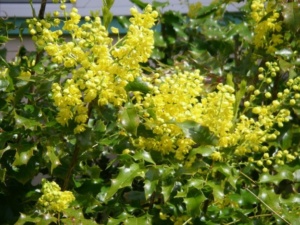berries: sts’al’s, sts’el’sa;
plant: sts’alsállp
The berries, though somewhat “bitter” tasting, were well liked by the Secwepemc. The roots were used to make a yellow dye and the berries made purple dye. The berries were picked and used traditionally as a food source and a tea, and more recently for jam and jelly. All parts of the plant, including the roots, were used in medicine. People made general use tonics with sticks of soapberry, juniper, choke cherry and Oregon grape.
Usually grows in low to mid elevations; common in Douglas Fir forests, in drier climates.
![]()

